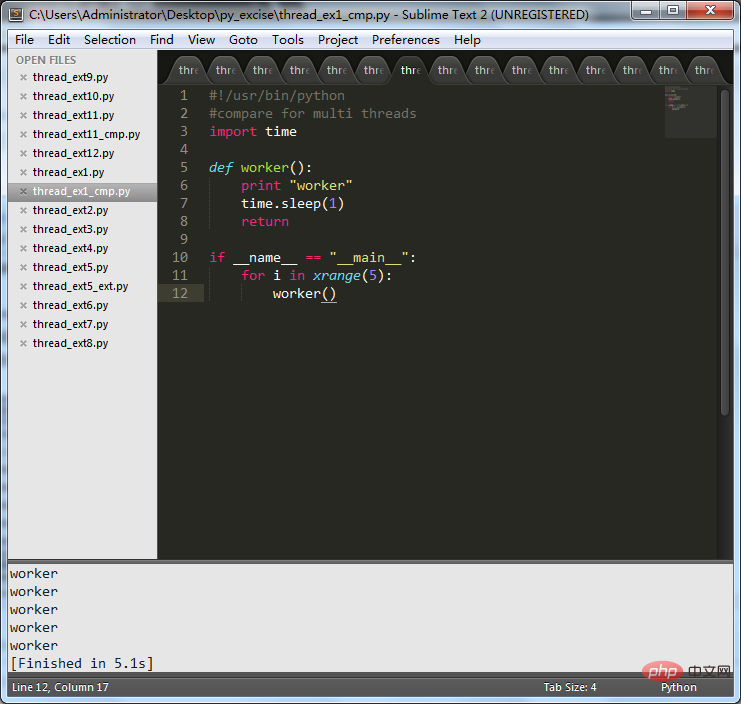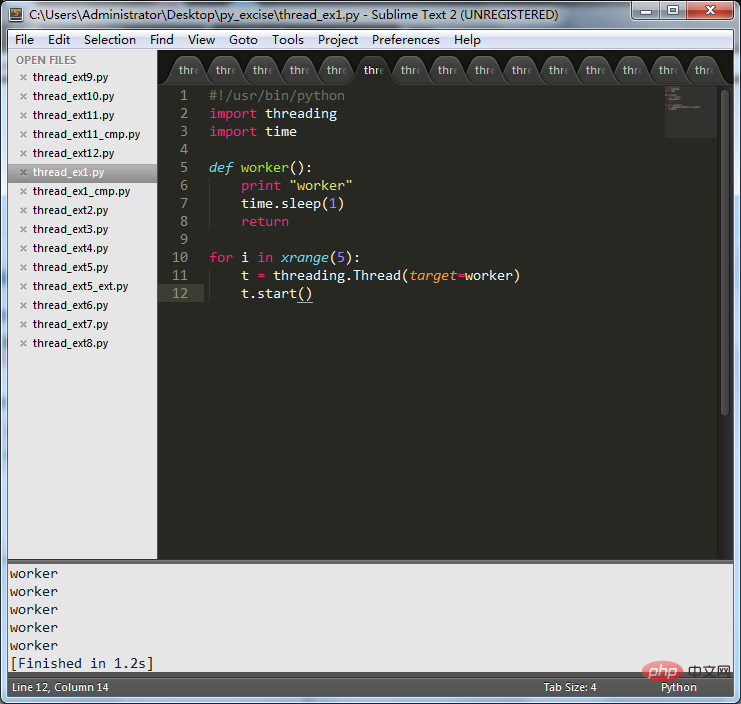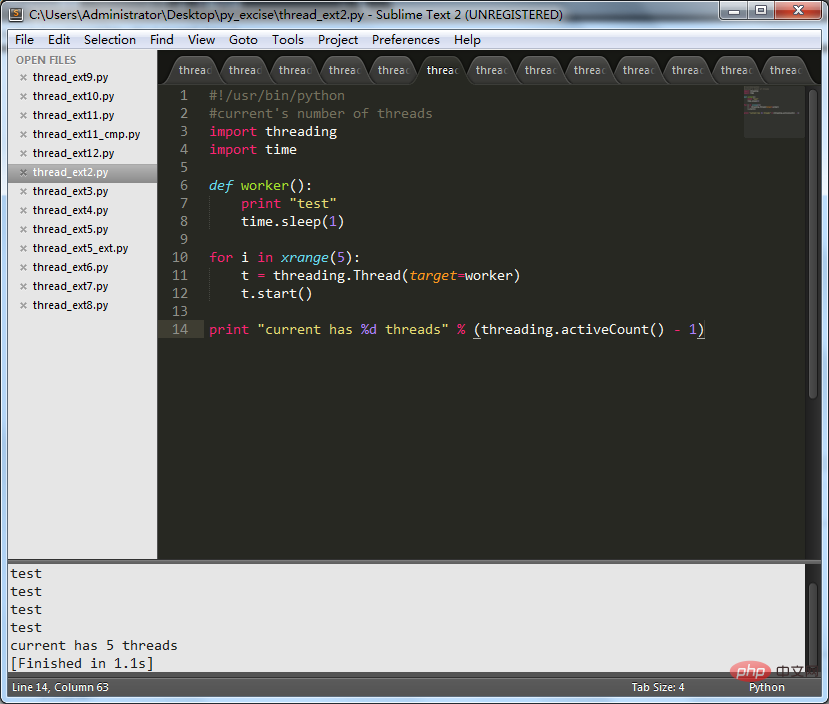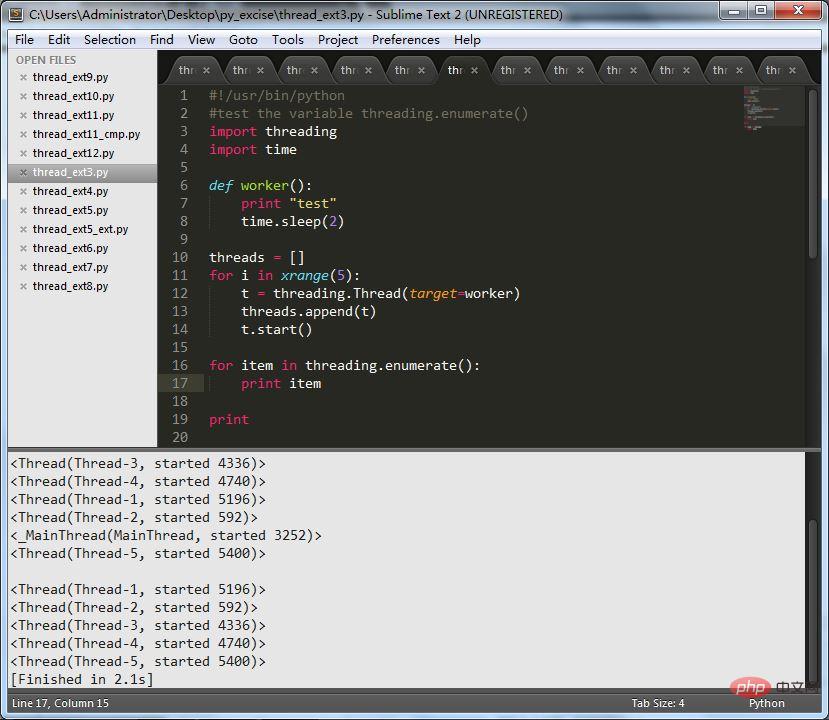Home > Article > Backend Development > How to use the threading module in python
Detailed explanation of the threading module in python. Threading provides a higher-level API than the thread module to provide thread concurrency. These threads run concurrently and share memory.
Let’s look at the specific usage of the threading module:
The target function can instantiate a Thread object, and each Thread object represents a thread. You can start running through the start() method.
Here is a comparison between using multi-threaded concurrency and not using multi-threaded concurrency:
The first is the operation without using multi-threading:
The code is as follows:
#!/usr/bin/python
#compare for multi threads
import time
def worker():
print"worker"
time.sleep(1)
return
if__name__ =="__main__":
for i in xrange(5):
worker()The execution results are as follows:

The following is the operation using multi-thread concurrency:
The code is as follows:
#!/usr/bin/python
import threading
import time
defworker():
print"worker"
time.sleep(1)
return
fori in xrange(5):
t=threading.Thread(target=worker)
t.start()
It can be clearly seen that the multi-threaded concurrent operation takes much less time.
This method returns the number of threads in the current process. The number returned includes the main thread.
The code is as follows:
#!/usr/bin/python
#current's number of threads
import threading
import time
defworker():
print"test"
time.sleep(1)
for i in xrange(5):
t=threading.Thread(target=worker)
t.start()
print"current has %d threads" % (threading.activeCount() -1)
This method returns the list of Thread objects currently running.
The code is as follows:
#!/usr/bin/python
#test the variable threading.enumerate()
import threading
import time
defworker():
print"test"
time.sleep(2)
threads=[]
for i in xrange(5):
t=threading.Thread(target=worker)
threads.append(t)
t.start()
for item in threading.enumerate():
print item
print for item in threads:
print item
Set the background process.
The code is as follows:
#!/usr/bin/python
#create a daemon
import threading
import time
def worker():
time.sleep(3)
print"worker"
t=threading.Thread(target=worker)
t.setDaemon(True)
t.start()
print"haha"
It can be seen that the printing operation in the worker() method is not displayed, indicating that it has become a background process.
The above is the detailed content of How to use the threading module in python. For more information, please follow other related articles on the PHP Chinese website!